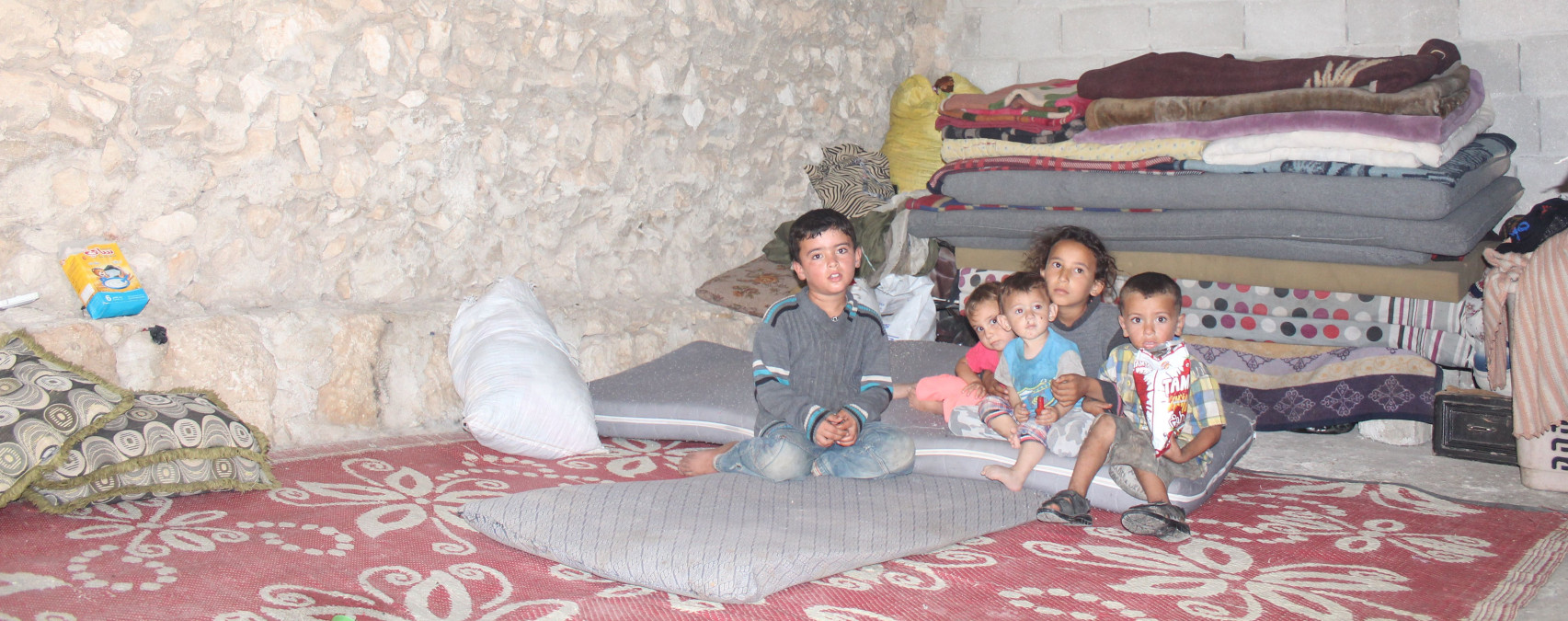10 things you need to know about Idlib province in Syria today
Published: Sep 7, 2018 Reading time: 4 minutes Share: Share an articlePeople in Need first began supporting people in Idlib in late 2012 and has since continuously assisted the local population by providing food, support for education and agriculture, cash-for-work opportunities and support for local authorities. Right now, People in Need is ready to respond to an upcoming crisis with ready-to-eat food rations and cash support for those displaced by the fighting. With 6 years of experience working on the ground in Idlib, we have developed our understanding of the humanitarian situation there and would like to offer an insight into life in the province in the form of 10 questions and answers.

1. Where is Idlib?
Idlib is one of the 14 governorates of Syria. It is situated in northwestern Syria on the border with Turkey. It is roughly twice the size of Luxembourg.
2. Who lives in Idlib?
Before the conflict, the governorate had a population of 1.5 million people. The UN estimates that some 3 million people live in Idlib today, nearly half of whom have already been forced to flee their homes multiple times. Over half the population are children, and widowed women headed many households. There are many people from Aleppo, Eastern Ghouta, Homs or Daraa, (those areas that were handed over to government forces in surrender deals or military defeat) from where tens of thousands of people, including civilians and fighters, were transported in buses to Idlib.
3. Why is Idlib in the news now?
Idlib is one of the last few (and the largest) rebel strongholds in Syria. The Syrian government and its allies intends to deliver the final military blow against the rebel fighters and their civilian supporters who rose up more than seven years ago demanding regime change. Many analysts believe that after Homs, Aleppo, Eastern Ghouta and Daraa this is last major battle of the Syrian conflict.
4. What is happening there now?
The Syrian government, with support of Russia and Iran, is preparing to launch a military offensive against Idlib. They see a chance to crush the remaining opposition and believe that the defeat would effectively end Syria’s war.
5. What will be the impact on civilians?
The UN estimates that as many as 800,000 people could be forced to flee in the event of an attack. In the densely populated province all attacks will very probably cause a large number of casualties and fatalities.
6. Where will the displaced people go?
Turkey already hosts over 3.5 million Syrian refugees, the border is effectively sealed and people who cross it illegally are currently being shot at. Preventing a refugee influx is a priority for Turkey, so safe zones inside Syria near the Turkish border are being discussed.
Crossing the frontlines to the government-controlled areas will automatically mean that civilians will be caught in crossfire.
The UN has urged for the establishment of humanitarian corridors through which civilians could be temporarily evacuated to safer areas. At this moment, it seems the only area where civilians would be able to flee to would be Turkish controlled territory in Northern Syria, which has limited capacity to host increasing number of displaced people.
7. What does life look like in Idlib?
The inflow of displaced people is almost constant. Overcrowded camps and temporary shelters are everywhere and are largest near the Turkish border. It is not uncommon to meet people who have fled the fighting five times.
8. What is the humanitarian situation there?
Idlib faces rising acute levels of malnutrition in Idlib province, and as many as 1.6 million people in the province rely on food assistance. Despite aid coming via the border crossing with Turkey, food and medicine are in short supply. For most people, especially the displaced, life is hard - they rely on aid from humanitarian agencies and income from any job they can find. Agricultural production has significantly decreased and food prices, on the other hand, have risen.
Schools have been damaged and destroyed and many children have been completely out of the education system for years. People also suffer on account of the lack of accommodation capacity and many displaced people simply live in shop-bought tents and informal camps. The World Health Organisation has warned that less than half of Idlib's health facilities were still functioning in areas that may soon witness increased violence.
9. What kind of support do people in Idlib need?
Two thirds of the population (in other words two million people) are in need of some sort of humanitarian assistance. The greatest needs are connected with livelihoods and income. People do not have the resources to buy food and other basic items. Schools, hospitals and other civilian infrastructure has been destroyed or damaged and access to basic services is further deteriorating. Humanitarian NGOs are trying to alleviate the suffering of those most in need but cannot fully respond to the long-term humanitarian crisis on such a scale.
10. Do Islamist groups operate in the area?
The UN estimates that there are 30,000 rebel fighters in the province, of whom 10,000 fighters are designated by the UN as terrorists. Much of the local population does not care for the rebels’ priorities. This is partly also due to the fact that hard-line groups targeted civilian institutions, using detention, threats and assassinations to bring them in line.



